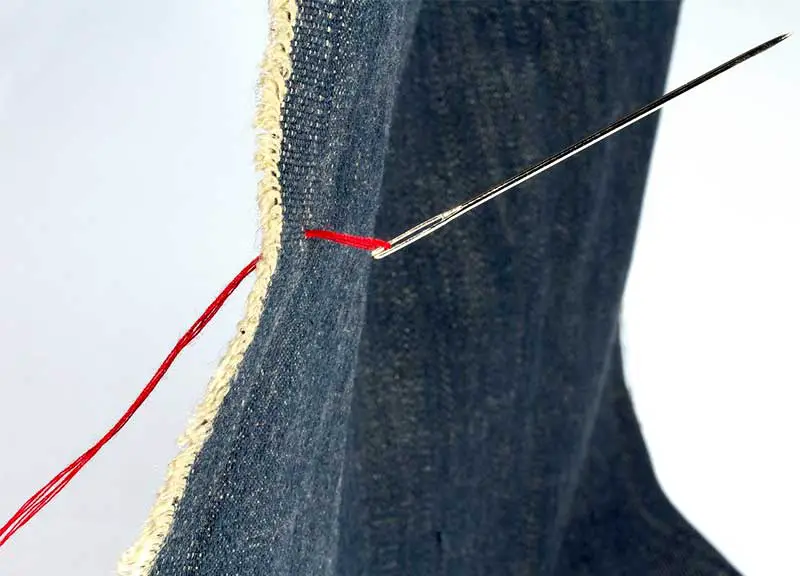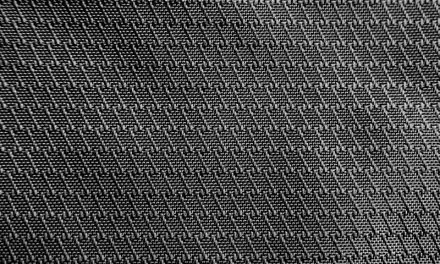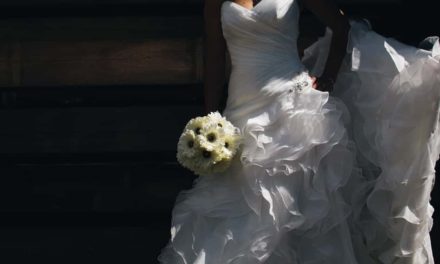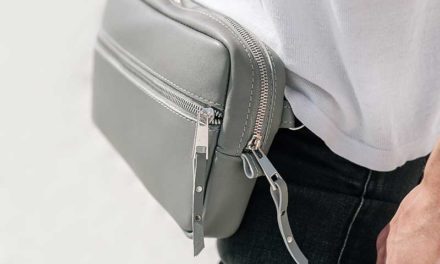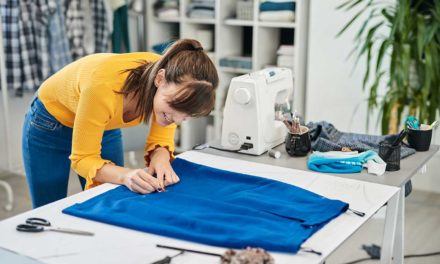Denim is one of the most popular choices of fabric. It comes in a variety of colors, weighs and washes. In 1873, Strauss and Davis patented indigo denim workwear pants, but it wasn’t long before it became a mainstream fashion staple.
This long-lasting cotton fabric is made using a twill weave, which is a pattern of diagonal ribs. The weft thread goes over then under one or more warm threads, with an offset between rows. This fabric usually has a darker colored front side.
No matter if you want to patch up a pair of old jeans or you’re planning on making a new one from scratch, you need to be fully prepared for the task. In this article, we’ll cover everything you need for sewing denim.
Table of Contents
Can All Sewing Machines Sew Denim?
This depends on the weight of the fabric. In most cases, a couple of layers of light or middleweight denim are no issue for a basic home sewing machine. However, don’t expect it to sew through multiple layers and heavyweight denim. For this, you’ll need a heavy-duty sewing machine, which has a more powerful motor that drives the needle through the fabric effortlessly.
You need to take your time when sewing this fabric. Use walking or rolling foot attachment to move both layers of denim through the machine in unison.
Tools Required For Sewing
Having a strong sewing machine is just the first step. You’ll also need adequate needles and threads that can actually go through this heavy fabric.
Jeans needles are longer and sharper than those made for lighter fabrics. If you’re sewing light denim, a 90/14 needle is a suitable pick. For a heavier fabric, pick either 100/16 or 100/18.
Is polyester or cotton thread a better choice for denim? The color of polyester thread stays the same even after innumerable washes, but in the case of denim, that’s actually a disadvantage. This type of fabric fades, so a thread that fades with it is a better option, like a cotton one. However, a cotton thread is nowhere near as strong as a polyester one is.
In this case, there’s a middle ground – a cotton wrapped thread. It looks and feels like cotton, but it’s long-lasting and stretch-resistant like polyester. Use this type of thread for constructing your piece. For sewing through multiple layers, you can use a topstitching or upholstery thread.
Usually, classic indigo denim garments have an orange thread. Yellow and red are also a great contrasting option, as well as fluorescent pink and green. Of course, this is a personal preference, so pick whatever color you like.
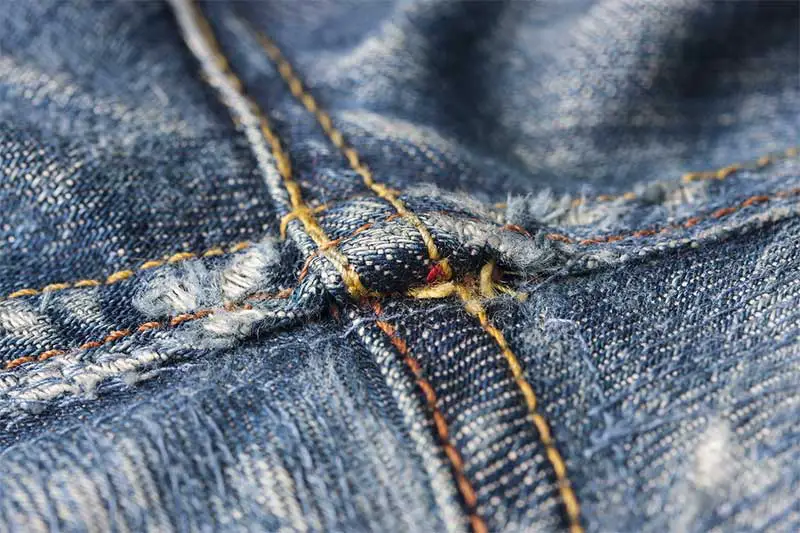
Preparing The Fabric
Now that you know what tools you need for sewing denim, it’s time to pick a pattern. This material is great for structured pieces of clothing, from shorts and pants to jackets and dresses. For advanced tailors, corsets and jumpsuits are also a great garment option.
Pick the appropriate denim for the chosen pattern. If you’re making a jacket, you’ll need a heavyweight canvas. If you’re working on a flowing garment, then lightweight denim is more suitable. However, you can also combine fabrics of different weights. For example, for details like a neckline, you can pick lighter denim. That way, you’re cutting down on volume.
Denim can shrink or bleed, so it’s important to pretreat it. To do so, wash in warm water, without using any detergent. For dark denim, do this twice.
There’s a common belief that vinegar prevents color bleeding, which isn’t true. Back in the day, vinegar was added to the dye to help the fibers absorb it. However, it does nothing to prevent it from fading or bleeding.
A pair of sharp shears can easily go through a double layer of light or medium weight denim. However, if you’re working with a heavy piece of fabric, always opt for cutting in single layers.
Okay, let’s talk about interfacing. While denim fabric has enough stability, you should still use interfacing in places like a waistband or fly. Tricot fusible interfacing is a great option that stretches and moves along with your fabric, while giving it another layer of firmness and protection.
Finally, we can’t forget pressing, an important step throughout all stages of sewing denim. If you’re working with heavy fabrics, pressing is crucial for neat topstitching. Always use your iron or a high-temperature steam setting.
Sewing Denim
Denim is not one of the easiest materials to work with. But now that we’ve covered the tools you need as well as how to prepare the fabric for sewing, you’re halfway towards a finished project.
Pay close attention to your seams. Denim is such a durable fabric, so seams should also be long-lasting, too.
A busted seam is a common option for outseams. You get this seam by sewing together two pieces of right-sided fabrics. The right side of the denim is usually darker in color, and warp yarns are more prominent. Once the pieces are connected, seam allowances (raw edges) are split with heat iron, then finished with an overlock stitch. This prevents fraying from being worn.
For inseams, overlock stitch is usually used. Just like the outseams, you need to sew the right sides together. But, in this case, you don’t iron split the edges. Instead, they’re connected together by overlocking. This is a strong stitch that doesn’t weigh down the fabric.
Finally, for parts that require extra strength, a flat felled seam is favored. This type of stitch is done by sewing two right sides of the fabric together. Then, press open the seam, and trim one side to ¼. Fold the longer side of the seam over the short side, and then fold the whole thing over, so that all raw edges are tucked in. Press, then stitch the edges, and that’s it! It may sound complicated at first, but you’ll get the hang of it in no time. This type of stitch creates two visible lines of stitching, but it’s the most durable one.
Sewing denim is no rocket science, but it requires adequate tools as well as patience. Once you have that, you’re set for this new project.

